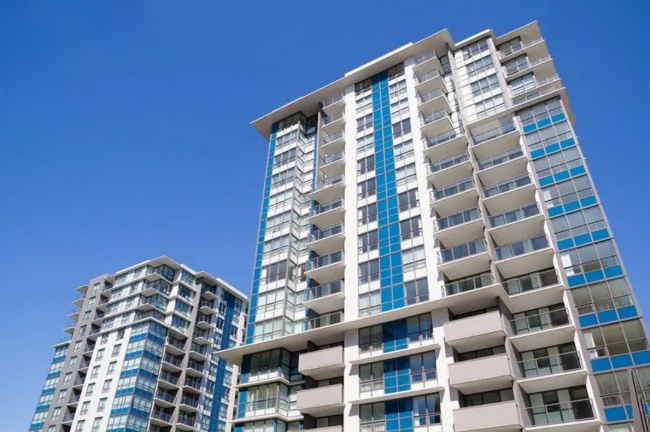Articles Menu

Sept. 25, 2024
Right across North America, sky high insurance rates are straining affordable housing providers and the millions who depend on them for shelter, while pushing new housing developments and retrofits out of reach.
The threat that climate change poses to the home insurance market, and to homeowners, is increasingly on the radar of policymakers, industry, and observers. United States Vice President Kamala Harris mentioned “jacked up” insurance rates during a recent presidential debate, while analysts at Deloitte said the insurance market has been “hit hard” by severe weather claims.
Digging into the widespread insurability problem, the New York Times writes that less attention has been paid to rental housing, “particularly for low and moderate income people.” Many affordable housing providers are now fighting for survival, unable to pass rising insurance costs on to their tenants as market rate apartment developers do.
“From Rhode Island to Louisiana, and from Texas to Washington, developers of affordable housing have been reeling from exponential surges in property insurance premiums,” writes the Times. In Southern California, non-profit developer Father Joe’s Villages paid US$450 per unit in insurance two years ago. “Now, that figure is $2,000.”
Back east, last year’s insurance hike of 62% hamstrung efforts to refinance capital improvements on a 129-unit low-income housing development in Rhode Island.
“Overall, nearly one-third of affordable housing providers reported increases of at least 25%,” reports the Times, citing a National Leased Housing Association survey from last fall.
Deductibles are rising in tandem, housing providers say.
“Our insurance premium has tripled in the last five years, but what’s really awful is our deductible [which] is now $500,000 per incident—which means we do not have insurance unless we have complete building failure,” Flo Beaumon, vice president of Catholic Housing Services in Washington State, told a State Senate housing committee in May. “It’s not sustainable.”
The Canadian affordable housing sector is likewise hurting.
“Increasing insurance rates are a significant challenge for affordable housing providers in Canada,” Bryan Woo, managing director of the British Columbia Non-Profit Housing Association (BCNPHA), told The Energy Mix.
“Rent revenues for non-market housing providers are a small source of funds, so rising insurance costs place a considerable strain on budgets that would otherwise go towards serving marginalized communities.”
Meanwhile, the number of people waiting for subsidized housing in Chilliwack, B.C., increased six-fold in the past eight years, reports the Fraser Valley Current. That count “doesn’t include the dozens of people at risk of homelessness who have applied for supportive housing.”
For low-income Americans, “access to affordable housing often relies on a network of non-profits that use public and charitable funds to rehabilitate or build homes,” writes the American trade publication Insurance Business. “The surge in insurance costs over the past year is destabilizing this network.”
Rising insurance rates are also making it impossible to perform essential energy efficiency and comfort upgrades for affordable housing. “With insurance being as expensive as it is, we’re much more cautious about getting involved in anything new,” Brendan Mitchell, real estate director for a program that rehabilitates and manages affordable housing in New York City’s Bronx borough, told Climate and Community in April.
“Up until about 2017, when we went to refinance, we would budget about US$500 or $600 per door to set aside for insurance,” Mitchell said. That figure has jumped to between US$2,000 and $4,000.
He added that while his organization has been able to install solar panels on some buildings, courtesy of funding from the Biden-Harris administration’s Inflation Reduction Act, most of his peers cannot afford the upfront costs.
“They can’t even entertain the idea of implementing solar in their projects or any green measures for that matter, because they’re waiting on that next insurance renewal, and they don’t know what it’s gonna look like.”
To solve the problem, policymakers need to catch up and demonstrate “more courage,” Seana O’Shaugnessy, head of the Community Housing Improvement Program in Northern California, told Climate and Community.
Far from being a partisan issue, the overlap between climate, insurance rates, and insecure housing is “about everyone,” O’Shaugnessy said. “Because eventually we will all be impacted by this.”
In British Columbia, the BCNPHA is working to support non-profit housing providers struggling with insurance costs. In an effort to stabilize insurance premiums for the sector, the association recently launched a sector-led insurance initiative to pool premiums and dilute regional risks, BCNPHA director Woo told The Mix.
“On its own, an insurance policy in Nelson, for example, is a risk to the insurer due to wildfires,” he explained. “But as part of a larger premium pool across regions, that wildfire risk is reduced, being mixed with policies in non-wildfire areas.”
The BCNPHA created the Community Housing Coverage initiative, which just completed its inaugural year as the “business-to-business facilitator” between the non-profit housing sector and BCNPHA’s broker, HUB International. It covers nearly 350 affordable housing buildings across the province.
[Top photo: Province of B.C./flickr]